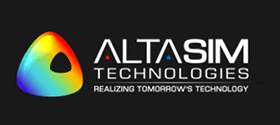Laser ablation is becoming the go-to technique for minimally invasive procedures ranging from tumor removal to cardiac arrhythmia correction. However, designing safe and precise ablation devices, especially those compatible with MRI, is no small feat.
Here’s where the invaluable expertise of COMSOL engineers becomes crucial.
Why Laser Ablation?
Unlike traditional thermal or chemical ablation, laser ablation offers unparalleled high spatial precision and can be guided in real-time with imaging tools. It’s ideal for delicate areas such as the brain, spine, or heart, where collateral damage could be catastrophic.
Key engineering challenges include:
- Modeling laser-tissue interactions
- Predicting thermal spread
- Avoiding damage to adjacent healthy tissue
- Designing MR-safe delivery tools
COMSOL to the Rescue
Using COMSOL’s Heat Transfer Module and Laser Heating physics interface, engineers can simulate how laser energy deposits in biological tissue.
Results include:
- Specific absorption rate (SAR) profiles
- Temperature distribution over time
- Tissue damage thresholds (Arrhenius model)
- Beam focusing and scattering behavior in heterogeneous media
When it comes to MRI compatibility, COMSOL’s AC/DC and RF Modules help engineers simulate how conductive device components behave in strong magnetic fields, vital for ensuring safety and image fidelity.
Smart Control Systems
Next-gen ablation devices often include feedback loops based on real-time temperature or impedance data. Engineers use COMSOL to simulate these embedded systems and validate control logic before prototyping, reducing trial-and-error and streamlining product development. Contact Us.
